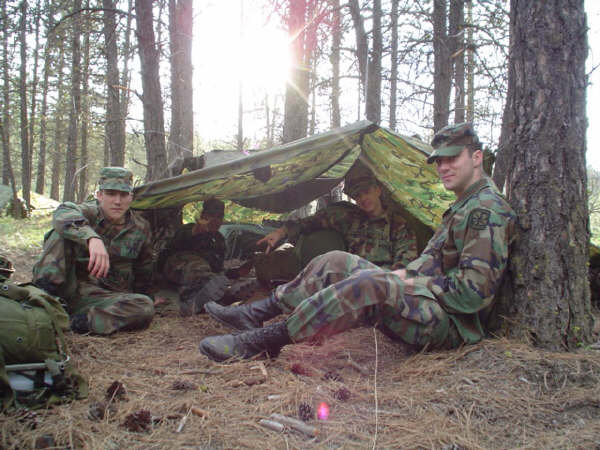
Tornadoes
Tornadoes are mobile, destructive vortexes of violently rotating winds that can reduce structures to a pile of debris. They can happen everywhere, but in the United States they are most common in the Midwest. The most tornado-prone states are Texas, Kansas, Florida, Oklahoma and Nebraska. If you live in one of those states, you should consider building an underground storm shelter for your and your family's safety.Hurricanes
Hurricanes also produce powerful winds that can level houses and other conventional structures. But these disasters come with additional threats, such as flooding and storm surges. So when installing a safe room, place it someplace elevated so it doesn't get submerged in water.Airborne contamination
Airborne contamination can take the form of radioactive fallout, a biowarfare attack, a chemical spill or even the smoke from a wildfire. In any of those situations, the air is no longer safe to breathe. If inhaled, it can suffocate or damage your lungs and kill you. A properly equipped safe room can protect against airborne contamination. A full filtration and environmental/atmospheric system with air scrubbers, sensors and overpressure systems can clean the air. You can stay inside this safe room until authorities say it's safe to go outside. (Related: Will you know when it’s time to bug out? 14 signs to watch for.)Earthquakes
The best course of action during an earthquake is to go outside and stay away from buildings, trees, power lines and any other tall structures that can collapse. But earthquakes are unpredictable. And if you live in a big house that's not built to withstand earthquakes, it can take several minutes before you reach the door. Consider building a storm shelter inside your home to protect against falling debris.Terrorist attacks
A terrorist attack can take any form, from bombings to biological agent releases and the deliberate setting of mass fires. If an attack takes place near residential neighborhoods, a safe room that is heavily reinforced with armored walls can save you and your family.Reminders when building a safe room or storm shelter
You should hire a professional to build your survival shelter because a safe room must meet the standards set by the Federal Emergency Management Agency. However, you can choose where to build it and then consult this location with a contractor. The basement and the garage are the best places to install a storm shelter, but the ideal location also depends on the disasters that typically hit your area. If your state is prone to hurricanes, you'll be much safer if you put it somewhere elevated than in the basement. Once you have a safe room or storm shelter at home, stock it with the following survival supplies:- Food and water
- Cellphone and emergency radio
- First-aid kit and medications
- Weapons for home defense
- Emergency toilet
- Flashlights, headlamps and other sources of light
- Blankets and body warmers
- N95 masks
- Portable oxygen tanks
Prepper medicine: How to make and use tea tree oil
By Divina Ramirez // Share
Water, food supply and hydration: Prepping for a summer power outage
By Zoey Sky // Share
12 Shrubs and trees you should have in your permaculture garden
By Divina Ramirez // Share
Always ready: 12 Must-have supplies to stock up on before SHTF
By Zoey Sky // Share
Survival foraging: 5 Edible weeds to harvest when SHTF
By Zoey Sky // Share
How to make an invisible shelter looters can’t find
By Ralph Flores // Share
A botanical boost: New serum harnesses tropical plant to accelerate hair growth
By willowt // Share
Ember & Edge: The lost art of self-reliance in a fragile world
By kevinhughes // Share
Trump issues veiled threats to Mexico, Colombia and Cuba following Venezuela military operation
By bellecarter // Share
Russia condemns U.S. capture of Venezuela's Maduro as "armed aggression"
By avagrace // Share











